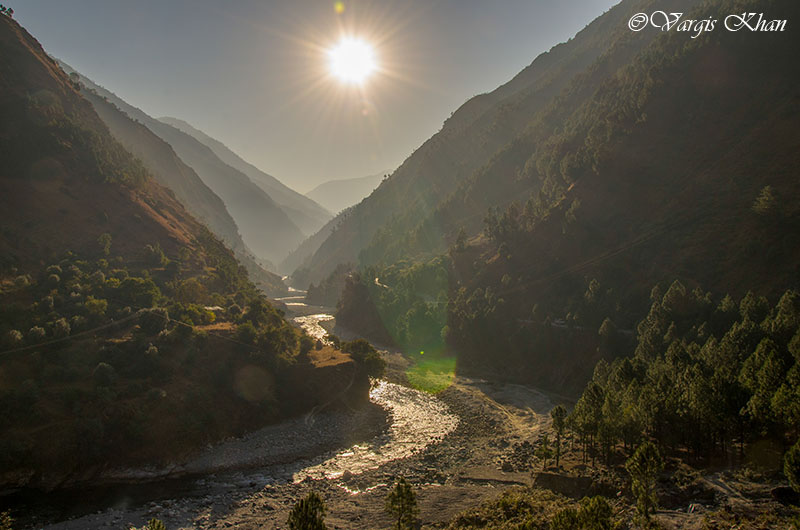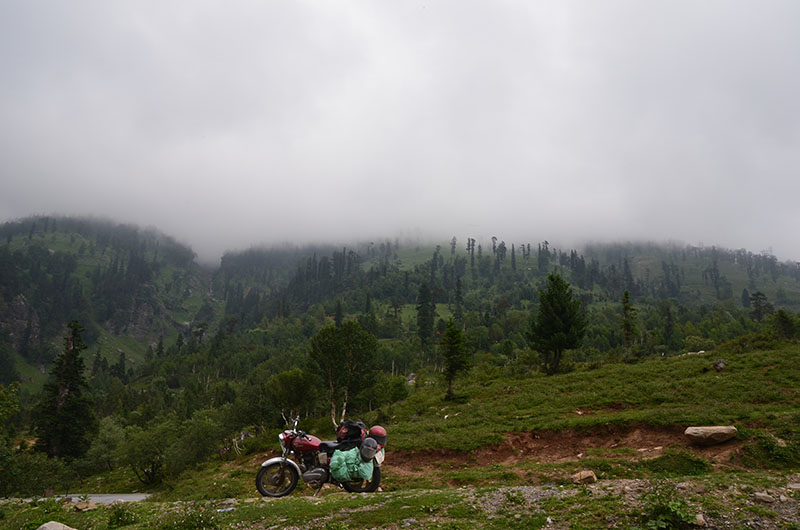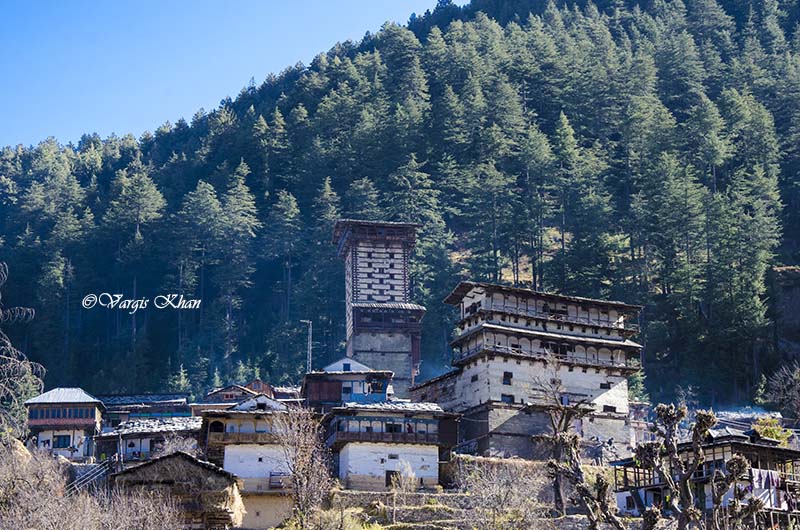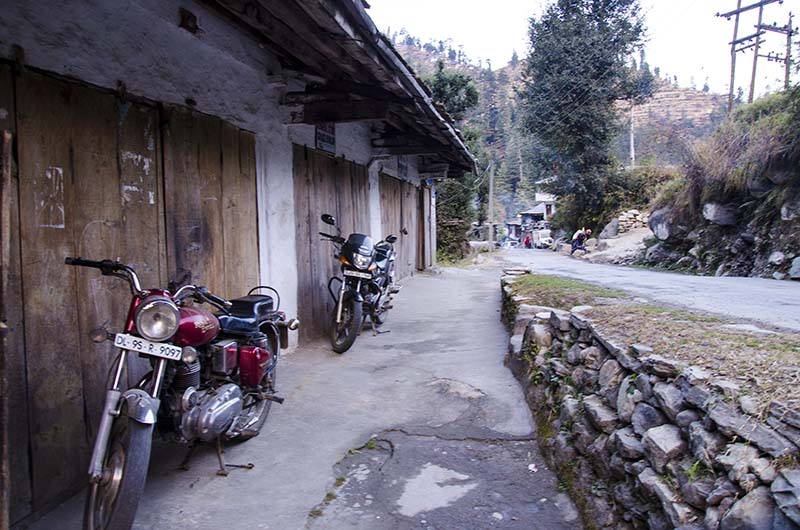Are you wondering when would be the best time to visit Tirthan Valley? If you think about it, the best time to visit any place will really depend on your reason to visit there. In the case of hill stations, some people visit there seeking snow-covered mountains while others would rather prefer pleasant weather. A lot will also depend on your mode of travel, budget, and overall duration of the trip.
With that being said, there is always a certain time of the year when every tourist destination receives the majority of its share of visitors. This period is what gets called the best time to be there and the weather is mostly the driving factor behind this. The same logic applies to Tirthan Valley as well.
The months of April, May, June, and September is regarded as the best time to visit Tirthan Valley because this is when the weather here is at its best. But would that time suit you as well? Read on to find out.
Quick Navigation
About Tirthan Valley
For a brief introduction, Tirthan is a valley located in Kullu district of Himachal Pradesh; at a distance of 65 kilometers from Mandi and 95 kilometers from Manali. It derives its name from Tirthan River which originates from Tirth, winds its way through the valley, and ends at Larji in the Beas River.
Even though it is located on one of the most traveled upon tourist routes of the country, not many people visit here. The majority of the tourists just travel straight to Manali and only a handful come towards Tirthan Valley. This makes Tirthan a perfect retreat for anyone looking to spend some time away from the crowd and rushed city lives.
The valley serves as a gateway to Great Himalayan National Park and provides ample opportunities for fishing, angling, trekking, camping, photography. For more details, please take a look at How to Plan a Trip to Tirthan Valley – A Complete Travel Guide.
Weather of Tirthan Valley
Tirthan Valley is at an altitude of about 1600 meters above sea level; due to which, the climate here remains pleasant for most of the year. The average temperature in summer ranges between 20 to 30 Degrees Celsius making it an ideal time to visit.
Things, however, can get very cold during winter with temperature dropping close to 0 degrees Celsius. But at the same time, it also becomes a great place for someone looking for a location that receives plenty of snow. During monsoon, the region receives moderate to heavy rainfall turning the vistas to a lush green.
Also Read: How to Plan a Trip to Jalori Pass
Best Season to visit Tirthan Valley
So when is the best time to visit Tirthan Valley? Now this will entirely depend on what you were looking for. If snow was on your mind; then visiting sometime in January or February will be best. If you wanted to enjoy pleasant weather then the months of April, May, and September will suit you the most.
If rain makes you uncomfortable and you tend to avoid wet areas then you should skip July and August. But at the same time, if you want to witness the valley under a carpet of green grass with flowers of numerous colors and clouds looming over, then July and August is the time to go. If you want to see the golden touch of autumn then you should visit in October or early November.
The road from Shimla to Tirthan Valley via Jalori Pass remains closed in winters. So for anyone who wants to cover the entire circuit including Jalori Pass and Serolsar Lake, the months from December to March would not be an ideal time.
Tirthan Valley is not really a costly place but for anyone on a shoestring budget, traveling in the off-season would help save some money, because it will give you a chance to negotiate a better deal in terms of accommodation. If you intended to do some trekking and camping then you must avoid going in monsoon season.
For someone traveling with family, the winter season can be very inconvenient because of freezing temperatures; unless it was the snow that you went looking for. November and December are not generally considered a good time because the weather gets too cold, and the vistas turn dull and dry.
Tirthan Valley in Winter
It starts to get cold in Tirthan Valley in October and by November; it is officially the winter season that lasts till March. The average temperature at this time ranges between 0 to 10 Degrees Celsius. Nights, however, are way colder and may drop even a couple of degrees below 0.
It starts to snow here sometime towards late December but it is really the months of January and February when the intensity and frequency of snowfall increases. This is also the coldest time of the year and unless it was the snow that you were after, you may want to avoid visiting in these months.
On a positive side though, Tirthan Valley transforms itself into a winter paradise at this time. Misty lanes and snow-clad terrain and woods with random green patches of vegetation on the banks of the Tirthan River is indeed a sight charming enough to please anyone.
Snow Starts to melt towards the end of February and is all gone in March. Temperature too is a bit warmer in March but still very cold at night. So if you wanted to experience moderately cold weather with snowy peaks then March can be considered a good time to visit. If you want to see plenty of snow and possibly catch a snowfall as well then you should plan either in January or February.
Also Read: Sightseeing in Tirthan Valley and Trek to Chehni Kothi
Tirthan Valley in Summer
Summers are probably the best time to enjoy several adventure activities in Tirthan Valley like trekking, hiking, paragliding, camping, horse-riding, Trout fishing, and boating. The season starts with April and continues till June. While the plains of northern India suffer from scorching heat at this time, the weather of Tirthan Valley remains pleasant at around 25 Degrees Celsius.
This temperature can actually fall further down at night and hence it is advised that you bring a light jacket along. Even though it is summers, you will still find plenty of greenery around; thanks to the Tirthan River that flows right through the valley.
These are the months when the Tirthan receives most of its tourists. People start to pour in to spend some time in pleasant weather. With tourist season in full swing, you will find plenty of adventure enthusiasts here looking forward to some trekking, camping, and rafting.
This is also the time ideal for photography; or for anyone who has an interest in wildlife or bird watching. The route across Jalori Pass too remains open this time so you have the option of planning it in form of a circuit and covering both the routes. You can reach Tirthan via Mandi and return via Shimla or vice versa.
Also Read: Tirthan Valley via Narkanda and Jalori Pass
Tirthan Valley in Monsoon
Tirthan Valley receives quite a bit of rain each year. Monsoon arrives here in July and continues throughout August. Even late June can experience some light pre-monsoon showers. In these months, it can rain anytime and may even force you to remain indoors throughout the duration of your trip. Due to this, it is not considered to be a good time to visit. Landslides caused by incessant rains are not uncommon in the region.
But if you are ready to take the risk, you will be rewarded with vistas that will make it worth your while. This is the time when the entire valley and the nearby Great Himalayan National Park comes alive with Flora and Fauna. Valleys turn lush green and colorful with flowers of all kinds. If you have even the slightest interest in photography, you will not be disappointed at this time.
A trip to Tirthan Valley in monsoon is possible but you just need to make sure that you waterproof everything. Planning to trek and camp at this time would probably not be a good idea. The road across Jalori Pass can be bad during rains so please practice caution while traveling.
Temperature in Tirthan Valley
The average temperature of Tirthan Valley ranges between 10 to 25°C in summer and 0 to 5°C in winter. During the months of winter, the night temperature can, in fact, drop a couple of degrees below zero as well. In the months of summer, this temperature can go even up to 30 Degrees at noon. Below is a month by month breakdown of how the weather in the valley trends in the entire year and what should you be packing for your trip.
Tirthan Valley in January
It is peak winter season and you will get a taste of freezing cold temperatures. You should pack all your woolens and heavy windproof jacket if visiting this time. A pair of snow boots would be preferred as well. The temperature of Tirthan Valley in January remains about 3 degrees Celsius on the minimum side and 12 Degrees Celsius on maximum. It can snow anytime but the amount of snow on the ground will be a bit less towards the earlier part of the month. You cannot travel to Tirthan at this time via Jalori Pass.
Tirthan Valley in February
The climate in February remains much the same as January. The amount of snow on the ground can be a little more than January though. The average temperature in February will remain around 7 Degrees Celsius; lowest at -5 and highest at 15. You will definitely need to keep heavy woolens for visiting at this time. You cannot travel to Tirthan in February via Jalori Pass.
Also Read: Tirthan Valley to Delhi
Tirthan Valley in March
The average temperature in Tirthan Valley in March goes up to around 20 degrees Celsius. The night temperature will hover between 5 to 10 Degrees Celsius whereas, during the day, it may very well jump up to between 25 to 30 degrees Celsius. Snow will mostly be all gone by March, especially from the lower areas. Some light woolens and a good windproof jacket will suffice for the trip. You cannot travel to Tirthan at this time via Jalori Pass.
Tirthan Valley in April
Spring arrives towards the end of March and marks the beginning of the tourist season in Tirthan Valley. This is one of the most pleasant times for planning a trip. The average temperature jumps up to about 15 Degrees Celsius between night and day. Around noon, it can even reach 30 degrees. Just pack a light jacket and plenty of cotton clothes for visiting this time and that will suffice. The route via Jalori Pass also gets opened in April and you can travel either via Mandi or Shimla.
Tirthan Valley in May
The month of May is officially the tourist season and is also the time when the valley receives the majority of its tourists. With summer vacations in schools on, a lot of people travel to Tirthan with their families this month. The nearby town of Manali gets overcrowded in May which makes Tirthan Valley a perfect destination for someone wanting to visit an offbeat destination that is also a safe place to bring their families along.
The Valley’s average temperature in this month remains in the mid-20s; with night temperature between 10 to 15 and day temperature between 30 to 35 degrees Celsius. So yes, it can even get hot around here in May. Pack a light jacket and plenty of cotton clothes for visiting this time.
Also Read: Delhi to Jalori Pass and Tirthan Valley
Tirthan Valley in June
This is the time when even Tirthan Valley can feel a little hot during the day. The average minimum temperature goes up to around 20 Degrees Celsius; whereas the average maximum temperature can rise as far as 40 Degrees sometimes. Nights, however, will still be very pleasant. Towards late June, Monsoon arrives in the region with some light pre-monsoon showers. Pack a light jacket and plenty of cottons for visiting this time.
Tirthan Valley in July
July officially marks the beginning of monsoon season in the region and it can rain here a lot; sometimes so much that it can even trigger landslides causing the roads to get blocked. If the weather turned extreme, it may very well ruin your trip by forcing you to remain indoors in your hotel. This is definitely not a good time for trekking.
The plus point of visiting in Tirthan Valley in July is that you will rarely find any tourists here at this time. You can get better deals at the hotels which also makes it a good time for budget travelers. Vistas and scenery also improve by a huge margin during monsoon. Packing clothes that can dry fast like Polyester will be wise for visiting in June. The average minimum temperature will be around 20 and maximum at 30 Degrees Celsius.
Tirthan Valley in August
Weather and temperature in August will remain the same as in July. It will still continue to rain but the intensity and frequency will be little less towards the end of the month. Tourists won’t be too many in numbers and it is a great time for photography enthusiasts and budget travelers alike.
The temperature in August will average out at 20 minimum and 30 Maximum. Pack a light jacket and plenty of cottons for visiting this time. The months of July and August are also not a good time to be traveling towards Jalori Jot.
Tirthan Valley in September
September is my opinion is among the best times to plan a trip to Tirthan. Monsoon would be long gone but would have left plenty of greenery behind. Vistas and scenery at this time will be similar to that of August but there won’t be any rain to spoil the fun. It is a great time for trekking and camping as well.
The average temperature will drop down a bit close to 15 degrees Celsius at night and 25 Degrees at Day towards the end of the month. In terms of clothes, you can still easily survive with cottons and some light woolens or jackets.
Also Read: Shringi Vatika, Tirthan Valley – A Great Homestay
Tirthan Valley in October
Magical time is what I really call October. Autumn arrives and all that was green in September turns to Orange in October. It gives an overall golden touch to the scenery which really is a sight for sore eyes. It is a great time to visit for photographers, budget travelers, and trekkers. Cold starts to settle in towards the end of the month. The average minimum temperature in October remains around 12 on the minimum side and about 25 Degrees Celsius as the maximum.
Tirthan Valley in November
November is probably the least favorable months to visit Tirthan Valley. Vistas will be dull all around, there will be no snow and the weather will be very cold with an average temperature at 6 Degrees minimum. Days will be pleasant still at around 20 Degrees. The month of November doesn’t really have much to offer in terms of tourism. The scenery would look a little boring and there won’t even be any snow around.
Tirthan Valley in December
December is the peak winter season here with the average minimum temperature falling close down to 3 Degrees. It will continue to get colder as the month progresses and by the end of December, it can snow here anytime. While days will still be at around 15; nights will start to get freezing cold.
For visiting in October, November, or December, you must pack all your good woolens to help protect against the cold. The route via Jalori Pass gets closed as it starts to snow towards the end of November or early December.
Tirthan Valley Best Time to Visit – Conclusion
That pretty much is all that you need to know in terms of the weather and the best time to visit Tirthan Valley. I hope the information above was of help. If you have any questions, please feel free to ask in the comments section below, or at our Community Forum; and I will be glad to answer. If you have any more tips on the topic, I welcome any suggestions.





17 comments
Hello vargis
March ending me 5 months baby ke saath tirthan valley jane ka plan kar rahe hai, kya baby ke saath jana sahi rahega, waha ka climate baby ke liye sahi rahega? Plz guide kijiye
Thirthan valey vs leh having 5 days in may end week
Koi hotel ka number or september me jana h or rasta kaise hai normal drive or any other system
Hi Vargis, you have given a very valuable information on Tirthan Valley & Jalori Pass. By far this is the best blog I have read on these destinations. My son wants to play in snow patches but we do not want to go to Manali & Rohtang Pass. Hence, Jalori pass seems a good option. Can you suggest when is the best time to go there 3rd week of March 2020 or 2nd/3rd week of April 2020 to get some good enough snow patches while going to Jalori from Tirthan side. I would also love to cover beautiful Prashar Lake. Can you suggest an itinerary which covers Prashar Lake, Tirthan, Jalori (with Serolsar) and what would be taxi charges for this 4-5 dayitinerary if hired from Mandi. Hope to get a guidance from you on this. Thanks in advance 🙂
Hello Vargis,
I and my husband Parag visited to Tirthan valley in this November, and your website was quite helpful for us!! Thanks a lot. We thoroughly enjoyed the trip. It was unplanned, and hence, we lived with the beautiful surprises in the nature. We did a trek at the GHNP, we did several trails, and we spend time with the beautiful river too. For 2 days we stayed at Gibhi, and 7 days in Sairopa.
Thank you for the valuable information!
Regards
Yashoda
Hi Yashoda – Thank you so much for taking the time to drop back a note. I am glad that the information was of help. Do share some pics from your trip if possible.
Hi Vargis,
I am planning to visit the valley around 20th December.. do you think this is a good idea.
You can go Khyati but it will be very cold and you will need to take the Sunder Nagar route only.
Is it advisable ti visit tirthan in nov last week, around 29 and 30. Also i will be self driving from bhuntar
Yes you can go. The valley remains open in November.
Hello vargis
March ending me 5 months baby ke saath tirthan valley jane ka plan kar rahe hai, kya baby ke saath jana sahi rahega, waha ka climate baby ke liye sahi rahega? Plz guide kijiye
I read there are good orchards of apples and many other fruits in Laida. Can you suggest the best season for catching ripe fruits?
I am planning to go there in the first week of november (8-12). Shall we go at that time because i just read in ur page that the month of nov is very dull.
Please advice.
Thank you 🙂 & also I heard recently about Jot in Himachal pradesh…. There is nothing much on internet about it … Can you guide me about that too….
That is Jalori Pass also known as Jalori Jot. See the post below please.
https://vargiskhan.com/log/jalori-pass/
M planning for a tour to tirthan valley in October… M from Kolkata. Can you guide me about the route.. like which route will be less time consuming… Either Delhi to Aur or Chandigarh to Aur?
Delhi to Aut and Chandigarh to Aut? It is the same route.